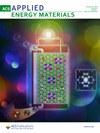Analysis and comparison of high-performance computing solvers for minimisation problems in signal processing
IF 5.4
3区 材料科学
Q2 CHEMISTRY, PHYSICAL
引用次数: 0
Abstract
Several physics and engineering applications involve the solution of a minimisation problem to compute an approximation of the input signal. Modern hardware and software use high-performance computing to solve problems and considerably reduce execution time. In this paper, different optimisation methods are compared and analysed for the solution of two classes of non-linear minimisation problems for signal approximation and denoising with different constraints and involving computationally expensive operations, i.e., (i) the global optimisers divide rectangle-local and the improved stochastic ranking evolution strategy, and (ii) the local optimisers principal axis, the Limited-memory Broyden, Fletcher, Goldfarb, Shanno, and the constrained optimisation by linear approximations. The proposed approximation and denoising minimisation problems are attractive due to their numerical and analytical properties, and their analysis is general enough to be extended to most signal-processing problems. As the main contribution and novelty, our analysis combines an efficient implementation of signal approximation and denoising on arbitrary domains, a comparison of the main optimisation methods and their high-performance computing implementations, and a scalability analysis of the main algebraic operations involved in the solution of the problem, such as the solution of linear systems and singular value decomposition. Our analysis is also general regarding the signal processing problem, variables, constraints (e.g., bounded, non-linear), domains (e.g., structured and unstructured grids, dimensionality), high-performance computing hardware (e.g., cloud computing, homogeneous vs. heterogeneous). Experimental tests are performed on the CINECA Marconi100 cluster at the 26th position in the “top500” list and consider several parameters, such as functional computation, convergence, execution time, and scalability. Our experimental tests are discussed on real-case applications, such as the reconstruction of the solution of the fluid flow field equation on an unstructured grid and the denoising of a satellite image affected by speckle noise. The experimental results show that principal axis is the best optimiser in terms of minima computation: the efficiency of the approximation is with 256 processes, while the denoising has with 32 processes.
分析和比较信号处理中最小化问题的高性能计算求解器
一些物理和工程应用涉及最小化问题的解决,以计算输入信号的近似值。现代硬件和软件使用高性能计算来解决问题,大大缩短了执行时间。本文比较和分析了不同的优化方法,以解决具有不同约束条件和涉及计算昂贵操作的两类信号逼近和去噪的非线性最小化问题,即:(i) 全局优化器矩形局部划分和改进的随机排序进化策略,以及 (ii) 局部优化器主轴、有限记忆 Broyden、Fletcher、Goldfarb、Shanno 和线性逼近的约束优化。所提出的近似和去噪最小化问题因其数值和分析特性而极具吸引力,而且其分析具有足够的通用性,可扩展到大多数信号处理问题。作为主要贡献和新颖之处,我们的分析结合了任意域上信号逼近和去噪的高效实现、主要优化方法及其高性能计算实现的比较,以及问题求解过程中涉及的主要代数运算(如线性系统求解和奇异值分解)的可扩展性分析。我们的分析还涉及信号处理问题、变量、约束条件(如有界、非线性)、领域(如结构化和非结构化网格、维度)、高性能计算硬件(如云计算、同构与异构)等方面。实验测试是在 "top500 "排名第26位的CINECA Marconi100集群上进行的,考虑了多个参数,如功能计算、收敛性、执行时间和可扩展性。我们在实际应用中进行了实验测试,例如在非结构网格上重建流体流场方程的解,以及对受斑点噪声影响的卫星图像进行去噪。实验结果表明,就最小值计算而言,主轴是最佳优化器:在 256 个处理过程中,近似效率为 38%,而在 32 个处理过程中,去噪效率为 46%。
本文章由计算机程序翻译,如有差异,请以英文原文为准。
求助全文
约1分钟内获得全文
求助全文
来源期刊

ACS Applied Energy Materials
Materials Science-Materials Chemistry
CiteScore
10.30
自引率
6.20%
发文量
1368
期刊介绍:
ACS Applied Energy Materials is an interdisciplinary journal publishing original research covering all aspects of materials, engineering, chemistry, physics and biology relevant to energy conversion and storage. The journal is devoted to reports of new and original experimental and theoretical research of an applied nature that integrate knowledge in the areas of materials, engineering, physics, bioscience, and chemistry into important energy applications.
 求助内容:
求助内容: 应助结果提醒方式:
应助结果提醒方式:


